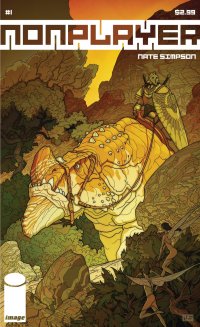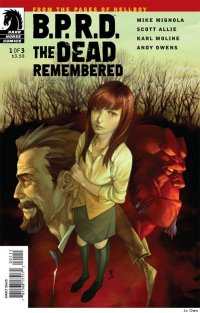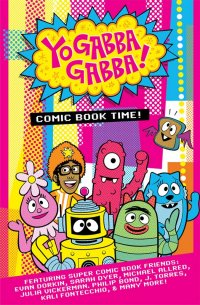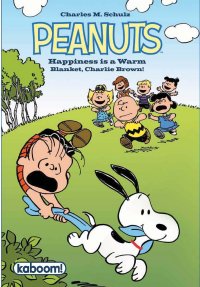 Nonplayer #1 (Image, $2.99)
Nonplayer #1 (Image, $2.99)
By Adam Prosser
A few months back, I stumbled across this comics blog by an illustrator named Nate Simpson. He was experimenting with creating a comic—he made it sound like nothing more than a lark—and was posting pages as they progressed. I was dutifully impressed, but aside from admiring some of the lavish artwork, I didn’t think it would end up going anywhere. The fact of the matter is, comics are a hard medium to make a go of, and the pages Simpson was posting were frankly astoundingly detailed—he’s been compared to Geoff Darrow—to the point where the effort Simpson was putting in would never make it worth his while to publish this book professionally. I expected his (then-unnamed) comic to remain an internet curiosity, perhaps gaining a fanbase and even making money as a webcomic, but remaining an informal project.
Surprise! Simpsons’ comic has now surfaced at Image as Nonplayer, with a substantial amount of hype behind it; it’s already being touted as the Next Great Indie Book. And it deserves to be; kudos to Simpson for pushing this through to the next level. I guess just from looking at the comic he’s produced, it should have been obvious that Simpsons’ modesty was masking a lot of ambition.
Nonplayer starts in a fantasy world of vast, alien beasts and dense forests, where an army led by a beautiful queen is marching towards some as-yet-undefined goal. Suddenly, the army is attacked by a pair of quipping marauders, and it’s suddenly clear that what we’re seeing is in fact a virtual gameworld reminiscent of World of Warcraft, bought to life via an elaborate, futuristic computer program. Except…is that all it is? The raiders are characters from our world, slaughtering their way through the “evil” army and brushing off the concept of death—respawning, of course, being a matter of money alone—and yet the “nonplayer” characters seem surprisingly emotive and human, reacting to the death of those around them with anger and grief. And then something happens that isn’t supposed to…
I think I’ve already made it clear that Simpson is an astounding artist, but I’ll say it again. The art here is some of the best I’ve seen, hyperdetailed yet clear, expressive yet immersive. It’s exactly the kind of artwork that’s crucial to bringing a fantasy world like this to life, and it furthermore services the themes Simpson is playing with perfectly. This comic would be worth buying for the art alone, but—almost unfairly—Simpson also turns out to be a fine writer, fleshing out characters effectively and conveying the situation—including the big “twist” of the gameworld—with just a few well-chosen lines of dialogue. His pacing is also excellent; given the lavish nature of his artwork, it’s wonderful to watch his establishing shots sprawl across several pages, yet the story never seems thin or drawn-out.
It really is mind-boggling that this is a debut comic; it feels like something an old pro would produce after years of labouring in the trenches. It’s a next-level work from someone who just walked in the front door. The only doubt I could possibly voice about this comic is whether Simpson would be able to keep up the level of perfectionism and sheer effort that went into this first issue over the long haul—but I think if there’s one thing this comic proves, it’s not to underestimate his tenacity.
Rating: 




Out of a Possible 5 Stars
 B.P.R.D. The Dead Remembered #1 (Dark Horse Comics, $3.50)
B.P.R.D. The Dead Remembered #1 (Dark Horse Comics, $3.50)
By Devon Sanders
Don’t know why but B.P.R.D.’s Liz Sherman has always been my favorite member of the Hellboy cast, Hellboy included. Never questioned why, just is. OK, maybe it’s because in the back of my mind, I envisioned her as Patti Smith, if she were pyrokinetic and burned down her whole neighborhood and took out the family dog. So, when Dark Horse announced its latest B.P.R.D. mini would center on a teenaged Liz hunting ghosts in the New England woods, I just had to give a whirl. I’m very happy I did.
Having been a ward of the B.P.R.D. for just over two years, a twelve year old Liz really doesn’t have much to say to much of anyone. Well, there’s Hellboy but he’s Hellboy, he’s just good people. Liz doesn’t get out much. OK, she doesn’t get out at all so Hellboy helps arrange a trip where Liz will meet ghosts, a chain-smoking teenaged boy and a ride in the back of a smokin’ Lincoln Continental.
Writers Mike Mignola and Scott Allie do a great job capturing the quiet teenaged angst and more importantly, the aloofness and anxiety we all know as Liz Sherman’s. The plot is
suitably spooky and at times comes across quite like a “lost” Stephen King short story. Not a bad thing, at all. Art chores are handled by an absolute favorite of mine, former Route 666 artist Karl Moline. Moline is the rare artist nowadays who can actually draw teens as teens as something other than kid faces on stick figure bodies. Body language is king in his art and adds so much to the overall enjoyment of this story. If he were to stick around in the Hellboy Universe for a bit, I certainly wouldn’t mind.
B.P.R.D. The Dead Remembered #1 is a fun bit of weirdness, a 70’s era Nancy Drew mystery wrapped in some particularly good Liz Sherman sullen-ness.
Rating: 




Out of a Possible 5 Stars
Yo Gabba Gabba: Comic Book Time HC (Oni Press, $24.99)
by Graig Kent
It may seem antithetical on the surface, but I think I am the exact target audience for this book. I am, after all, a long-time (lifelong, in fact) comic book reader, I am also a parent, a lapsed hipster, and, to be blunt, a fan of Yo Gabba Gabba. I became aware of Yo Gabba Gabba even before my baby was born, as my then-avid interest in alternative music (as well as a just-as-avid interest in alternative kids music) led me towards the show. If you’re unfamiliar with “Gabba” (as my daughter truncates it), it’s a modern day melding of Sesame Street formula, Pee Wee’s Playhouse sensibilities and Sid and Marty Krofft aesthetic, all spiced up with DJ and retro video game culture. The show features a quintet of brightly colored toys-come-to-life (a one-eyed alien, a cat-dragon, a magic robot, a fuzzy monster and a Barbapapa-esque hippie creature) living in the “Gabbaland” playset, and watched over by DJ Lance Rock. Each episode has a theme which leads to the main “story” of the episode, told via framing sequences around animated features, quick and quirky interstitials, regular features (like Biz’s Beat of the Day, where rap legend Biz Markie teaches kids to beatbox, and “Dancey Dance Time” where a celebrity like Elija Woods or Jack Black teach the Gabba crew a new dance) and music (the “Super Music Friend Show” has a different alt band each episode, like Mates of State, The Roots and Hot Hot Heat).
Yo Gabba Gabba: Comic Book Time logically takes from their formula what will work on paper and ignores the rest for this impressive and, yes, lavish hardcover collection. Obviously the music component is a no-go, but the Gabbaland creatures are given various adventures and learning experiences to participate in from the likes of Mike Allred, Dave McCaig, Chris Eliopoulos, and Philip Bond. Evan Dorkin and Sarah Dyer bring their animated feature “Super Martian Robot Girl” to the page in two new adventures, bringing their trademark humor along with it. There are a handful of “Story Time” features, each of which could stand alone as its own children’s book. Yuko Ota and R. Stevens provide a how-to Dancey Dance splash page for each of the Gabbaland characters, which seem logical enough to follow (but I haven’t put it to the test yet as my daughter has yet to get past the inside cover, as she attempts to learn to name of every ancillary Gabba character pictured there). There’s even a “Knock Knock Joke of the Day” written by Paul Scheer (who performs the skit with Jack McBrayer on the show).
Even if you don’t have kids or a vested interest in things “Gabba”, serious cartooning and art enthusiasts will certainly appreciate this book in spite of the material. It’s a handsomely designed, all around gorgeously illustrated anthology, genuinely entertaining for both kids and their parents. Sure it’s infantile, but also quite kitschy, and the allure that draws the kids is almost as inescapable for adults. There’s a lot of fun, heart, and even some learning to be had within (Science! Opposites! Dancing!). It’s vibrant and diverse, which means it doesn’t get boring or stale. Most children’s books feel like a snack, meant to be consumed quickly and repeatedly, but Comic Book Time in comparison is a big multiple-course meal, but one that’s easily consumed in stages and one where you can have your dessert first, and also not so filling that you and your kids won’t want seconds at some point. The only thing that could make it better would be if there were an accompanying soundtrack.
Rating: 




Out of a Possible 5 Stars
 PEANUTS: Happiness is a Warm Blanket, Charlie Brown (Boom!/Kaboom, $19.99)
PEANUTS: Happiness is a Warm Blanket, Charlie Brown (Boom!/Kaboom, $19.99)
By Jeb D.
I hate to be negative, but this book put me in mind of the Monty Python bit about adapting The Cherry Orchard for radio by “putting it onto a piece of wood and banging a few nails through it”: what we have here is “the first Peanuts graphic novel” if you read the press release; or, if you read the book itself, what we have here is a bushel basket of classic Peanuts strips meticulously re-drawn and thrown together to form a rag-tag storyline, evidently in conjunction with a new animated TV special.
In the wake of the commoditization of the Peanuts brand over the past half-century, it’s easy to forget, or take for granted, that the soft-spoken, god-fearing gentleman known as “Sparky” was one of America’s great humor writers, with a gift for comic timing that a George Burns or Steve Martin would envy, and like many comics, with a deeply insecure dark side. He perfected the four-panel comic strip, and his natural neuroses and insecurities meant that he was often willing to leave a sting of bitterness to linger with his readers until the next day. And while his work has been hugely popular in collected editions over the years, the line of demarcation between each strip was clear, and Schulz always had the last word, even at four strips to a page.
This was the primary failing of most of the Peanuts TV specials after the first two or three: while Schulz did indulge in the occasional long-form story in the newspaper strip, he paced it expertly, four panels at a time over a week or so, not viewing them as a set of gags to be crammed willy-nilly into half-hour cartoons, which was a problem with the animated shows even when Schulz himself was involved. And, in this volume, the script from writers Stephen Pastis and Schulz’ son Craig (who I’m guessing is on the masthead for credibility more than anything else) has that same sense of forcing strip after strip, and joke after joke, into an uncomfortable and unnecessary proximity: time and again, a classically bleak image that served as a perfect final daily panel (Charlie Brown helplessly tangled in his kite strings growling to Violet “Don’t say anything–just go get some scissors”, or Lucy flat on her back, after being dumped off Schroeder’s piano, bemoaning the difficulties of falling in love with a musician ), is just another gag tossed in the middle of a story, with no context or space to breathe. And, like the TV specials, the comic mixes a few different storylines (the overarching one being Lucy’s efforts to force Linus to get rid of his blanket, but equal time is given to kites, baseball, Beethoven, Snoopy’s doghouse, etc.), but they run in parallel, rather than interlocking, or relating back to each other, and without even the minimal transitions possible in animation, the sequence from page to page feels bland and rarely compels the reader forward.
I don’t even know where to begin to talk about the artwork: the team which includes pencillers Vicki Scott and Bob Scott and inker Ron Norman, aren’t telling a new Peanuts story here, they’re basically recreating classic Peanuts strips, which talented commercial artists have been doing as piecework on lunchboxes and backpacks for fifty years. I mean, I guess they do it well enough, but to what end I’m not quite sure.
I don’t think it would be fair to say that I dislike this book so much as that I’m baffled by it: it’s not a graphic novel, it’s not a new Peanuts story, it’s not some kind of “Big Little Book” reduction for young readers, and why anyone would spend money on it instead of simply buying a collection of the original strips is beyond me. I’m giving it one star simply on the off chance that there’s some greater purpose at work that is escaping my notice.
Rating: 




Out of a Possible 5 Stars